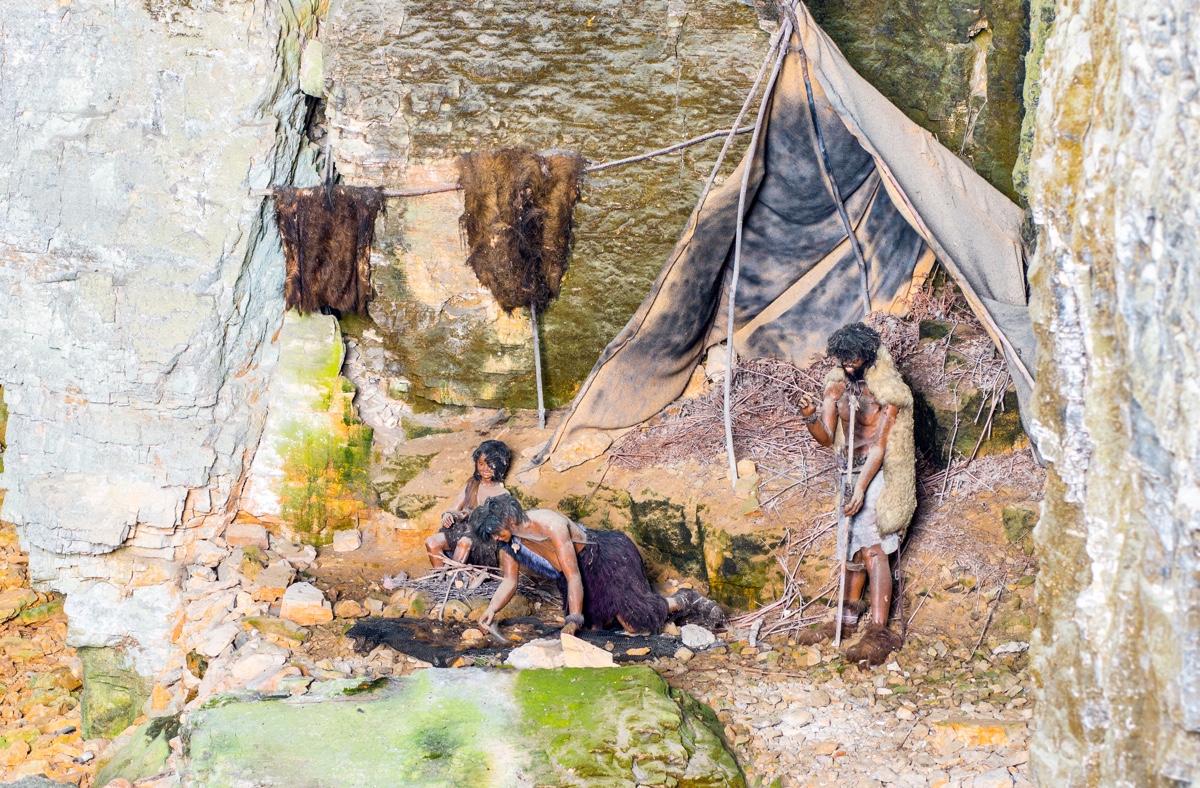Neanderthals and Humans Were Hooking Up Way More Than Anyone Thought

Way more sex happened between Neanderthals and the ancestors of modern humans across Europe and Asia than scientists originally thought, a new study finds.
Scientists initially thought that interbreeding among the two groups was more isolated to a particular place and time — specifically, when they encountered each other in western Eurasia shortly after modern humans left Africa. This idea stemmed from the fact that the genomes of modern humans from outside Africa are only about 2 percent Neanderthal, on average.
Subsequent research, however, has found that Neanderthal ancestry is 12 to 20 percent higher in modern East Asians compared to modern Europeans. [In Images: The First Bone from a Neanderthal-Denisovan Hybrid]
"There's been a lot of debate as to why East Asians seem to have a bit more Neanderthal ancestry than Europeans," said senior study author Joshua Schraiber, a population geneticist at Temple University in Philadelphia. "There've been two competing ideas. One is that East Asians happen to interbreed more with Neanderthals. The other is that, of the multiple ancestral populations of Europeans, one had very little Neanderthal ancestry, diluting the [overall] Neanderthal contribution."
To shed light on this question of interbreeding, scientists developed computer simulations that modeled how DNA would get shared during a range of numbers of encounters between modern humans and Neanderthals. Then, they looked into which models best fit modern human genetic databases.
The researchers suggested the patterns of Neanderthal DNA inheritance seen in modern humans are best explained by not one, but multiple, independent episodes of interbreeding between Neanderthal and modern humans, first and foremost in the Middle East, but also later in both Europe and East Asia. The dilutive effect likely also played some role in why there is less Neanderthal ancestry in modern Europeans than in modern East Asians, Schraiber told Live Science. In other words, both multiple interbreeding episodes and dilutive effects might have occurred, contrary to what was previously thought.
This scenario of multiple episodes of interbreeding between modern humans and Neanderthals fits in with the emerging view that various human lineages had complex and frequent interactions. For example, recent work found the mysterious human lineage known as the Denisovans apparently contributed to the modern human gene pool at least twice, leaving behind two distinct genetic component — one mostly in Papuan and Australian aboriginal populations, the other primarily in East Asian populations.
Sign up for the Live Science daily newsletter now
Get the world’s most fascinating discoveries delivered straight to your inbox.
More research is needed to explain why some Neanderthal DNA was kept in the human genome and some was purged, the scientists noted. For instance, previous work suggested that evolution weeded out a great deal of Neanderthal DNA from modern human genomes. One theory for this is that Neanderthal DNA was of less benefit to modern humans as their environments changed over time. Another theory posits that harmful mutations were more common in Neanderthals due to inbreeding, Schraiber said.
The scientists detailed their findings online Nov. 26 in the journal Nature Ecology & Evolution.
- In Photos: Neanderthal Burials Uncovered
- Denisovan Gallery: Tracing the Genetics of Human Ancestors
- Image Gallery: Our Closest Human Ancestor
Original article on Live Science.











